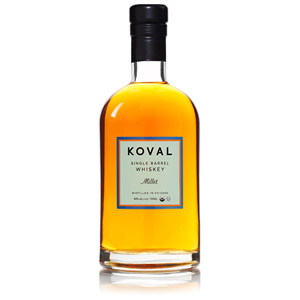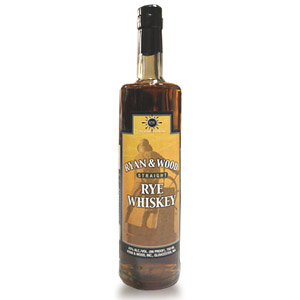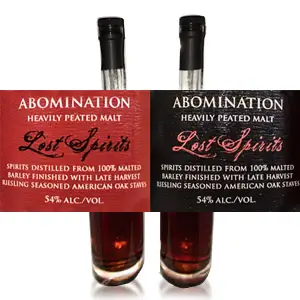I began writing this blog as a kind of personal journey over seven years ago, shortly after first discovering that there was a lot more to whisk(e)y than Glenlivet and Jack Daniels. In that short span there have been some massive changes in the industry, while many things have remained exactly the same.
First, some of the changes. NAS (no-age-statement) expressions went from a novelty to the standard entry bottling in nearly every major producer’s lineup. The same thing happened with special or limited-edition bottlings, which lost their age statements and gained an obscure Gaelic name. Transparency has become a crusade, led by pioneer blender John Glaser. Bottles such as the Weller bourbons that had always been available (and were often overlooked) entered into allocation mode and have not returned, or lost age statements or ABV due to stretched supply. Bottlings that were already allocated (Pappy, Buffalo Trace Antique Collection) have become unicorns. Bottles from independent bottlers have become both more expensive and of lower quality as available stocks dry up – many independents have left the business altogether. Secondary market (auction) prices have risen steadily and inexorably, while retail prices have also crawled steadily (if slowly) upwards. Japanese whisky became a phenomenon, eclipsing single-malt scotch in price and demand, and people learned that desirable whiskies were being made in India, Taiwan, Australia, New Zealand, and elsewhere. Irish pure (now “single”) pot still whiskey staged an unprecedented revival (indeed, a resurrection), as did American rye whiskey. The craft scene in all of the traditional whiskeymaking countries (except Scotland, oddly) got noticed on the international stage and shows no signs of slowing its expansion. All of this demand has stretched not only the supply of mature whisky, but also the supply of quality barrels, especially those that actually aged sherry. Most “sherry barrels” are, these days, simply ex-bourbon barrels that have been soaked in throwaway sherry for a short time. A lot of big names in both whiskymaking and whisky writing have retired, died, or otherwise gotten out of the business, and been replaced with new yet-to-be-proven names. Whisky shows, tasting rooms, and tourist trails are crowded, whisky publications and distilleries alike are becoming ever more conglomerated, new trendy bars are opening solely on the merit of their (often specialized) whisky lists, and cocktail menus are listing the brands of whiskies and other spirits in the description of drinks. The stranglehold of blended scotch on the Scottish whisky export market has loosened, with ever more customers turning down their parents’ blended brands in favor of single malts. The categories of rum, tequila/mezcal, brandy, gin, and even vodka are becoming more craft-oriented and terroir-aware and developing their own burgeoning aficionado communities. Technology-aged or “rapid-aged” products are arriving on shelves, to the chagrin of most (some are good: Lost Spirits, and some are not: anything from TerrePURE). All in all, there are more whisky products on the shelves than ever before, and yet finding reasonably-priced products of consistently high quality has become more difficult.
Many things are unchanged: Ralfy is still doing whisky video reviews, and peat is still the “big thing” in single malt scotch. Big-name distilleries are still putting out 10, 12, 15, and 18 year expressions in addition to their NAS offerings, and craft presentation (46% ABV, no coloring or chill filtration) is still a mark of relative quality. Barrel finishes involving various wines and spirits are still roaringly popular, and people are still putting their names on waiting lists hoping for Pappy Van Winkle bottles. The laws governing the sale and distribution of alcohol are still largely unchanged in most countries, and are still as antiquated and obsolete as ever (especially in Canada and the US). It is still basically impossible to try spirits before buying them in the US unless you’re lucky enough to have a well-stocked bar nearby or are willing to order samples from the UK. Whisky bloggers are still a dime a dozen (this one included), and Jim Murray is still making headlines with his annual off-the-wall choices of awards. Canadian whisky is still in the process of making a better name for itself outside Canadian borders, and American bourbon is still a hallmark of affordable brown booze.
Overall, in my limited experience, I feel that the industry has become more inclusive – reaching more customers in more ways than ever before, while at the same time becoming more challenging to newcomers, with a larger amount of noise and fewer gems among the stones. The marketing of whisky has contradictorily become more insincere in its message of authenticity. Terms like “hand crafted” and “tradition of quality” mean even less now than they did 7 years ago. Smaller distilleries and whisky companies are being swallowed up by large multi-nationals (by no means a new phenomenon in whisky), and being replaced by upstart craft distilleries in such numbers that one remembers the dot-com startup boom and draws parallels with trepidation.
Lastly, I’d like to take a moment to say a fond (and sad) farewell to literally my favorite person in the entire whisky sphere: David Driscoll announced last week that he is moving on from K&L Wines and Spirits (and its blog) after more than 10 years. David has been a direct inspiration to me, as well as a good friend and a voice in the darkness of the industry. His prose was always concise, his perspective insightful, his approach honest, and when he had to take sides it was always on the side of his customers. He opened my eyes to new experiences and generously shared more whisky (and knowledge) with me than I had any right to expect. I wish him the best of luck with his new opportunity (which isn’t related to whisky in any way) and hope that I am lucky enough to continue our acquaintance in the future. Cheers to you, David!





Great article! I’ve been following you since my whiskey journey began last year (and I MOSTLY remember to turn OFF the AdBlocker when I venture into your articles, sorry about that) and I would have to say everything you mention rings true with what I’ve seen at tastings, watching videos, in conversations, and in stores.
One new phenomenon that I think might be worth looking into is the Whiskey Vault. I get the impression you and Daniel would have an appreciation for each other’s work. Apologies if you’re familiar. They’re a part of a non-profit marketing school in Austin, TX called The Wizard Academy. They run a Whiskey Sommelier program, among other things, and have the fastest-growing whiskey YouTube channel, at the moment. I started watching them a couple days after I found your site and they have grown from three-hundred subscribers to well over 80,000. They do five reviews a week and launched a separate, more shenanigan-based, channel that releases videos every Saturday and are opening their own distillery within the next year. The reason that I mention them is that I think they will become a fairly powerful force in the world of whiskey if they continue along their current path. They have spread to Facebook and have fairly non-stop whiskey related posts and have a thriving, ‘magnificent’, whiskey-based community where the guiding principle is that the best way to drink whiskey is to drink the whiskey you like the way you like to drink it – no judgement or snobbery. People share collections, new bottles, rare finds, trips to distilleries, ask questions, etc. It is a really cool ‘thing’ that (in conjunction with your articles) has seen my whiskey collection increase from two bottles to 20+. Anyways, enough about them – the long and the short of it is that they are worth a half hour or so of your time, in my humble opinion.
Again, sorry for the redundant information if you’re familiar already. You were doing a bit of a recap in your entry here and I felt it slightly appropriate to do a bit of a recap of my own regarding my whiskey experience.
Cheers and keep up the great work!
Thanks for the note! Cheers!
Been 7 years already? As if it was only yesterday when I stumbled upon your JW black review. I was just 19 y/o then (24 now) and I now drink the component malts of that blend, though I still do sample a dram of the blend, particularly when I can’t decide on what I want. Cheers Mr. Scotchnoob! You have helped me greatly with my purchasing decisions and are a big part of my growth.
Thanks for the synopsis from the last seven years. It helps your readers to establish the landscape of the wonderful whisky world and how they may fit into this complex and evolving puzzle.
“The laws governing the sale and distribution of alcohol are still largely unchanged in most countries, and are still as antiquated and obsolete as ever (especially in Canada and the US).” I am particularly interested in this statement – could you please share your recommendations for how our countries could improve this situation?
I live in British Columbia and I am continuously trying to figure out how to purchase whisky in more economically ways as our market is heavily taxed. A laphroig 10 on the shelf at a government liquor store is 82.99$ then add 15% taxes and you quickly get to 95.43$ per bottle. The point being is that is becomes very expensive to taste whisky and build a bar up in our market. I know this money helps fund our health care, education etc… but it still seems exorbitant.
Thanks for your quality work, please keep it up.
The laws in the US are based on an “anti-organized-crime” model that sprang up after Prohibition. The forced separation of producer, importer, distributor, and retailer creates tons of inefficiencies, headaches, and bureaucratic nightmares for the industry, all of which eventually gets passed on to consumers in the form of higher prices, lack of availability, and highly variable prices across regions. Add to this the patchwork of local laws regarding the shipment and sale of alcohol in each state, and lobbyist-created laws that hamper innovation and competition (the 750ml bottle, for example – it’s illegal to sell 700ml bottles at retail in the US), and you get a giant headache for something that should be relatively simple. In Scotland and the UK you have similar issues around laws regarding what information is legally allowed on labels. In some Canadian provinces and some US states, liquor control boards squelch the free market for booze, and nearly always result in higher prices, higher taxes, and less availability for consumers. I mean… duh, it’s a government-enforced monopoly! That’s what I meant. 🙂
There is movement afoot to change things on the regulatory front, even in the conservative Deep South. But the politics are difficult and change will be slow, because you can be sure that the entrenched players will fight for their turf every step of the way.
http://www.sunherald.com/news/business/article180089426.html
I, for one, will not miss Dave Driscoll or his contribution to whisky commentary. When he had to choose between the interests of his sales and his customers, he simply said, point blank, that booze companies had a license to lie.
“The K&L Spirits Journal is not a journalistic news source. It has never been, never claimed to be, nor will it ever be. This is mainly because there is no such thing as booze journalism as far as absolute truth is concerned. There is only booze romanticism or booze antagonism. The president can be held accountable for lying to the general public, but booze companies cannot be, nor should they be. Unlike publicly elected officials, it’s not their job to tell you the truth. It’s their job to sell you something. As consumers, it’s our job to decide whether or not to give them our money.” – https://myannoyingopinions.com/2014/04/19/jumping-the-driscoll/
He even had the audacity to switch hats mid-stream and then pretend that he was a fellow consumer, helping to decide whether to give booze companies “our money”. Driscoll’s idea that “there is no such thing as booze journalism” is legitimately interesting, but to base it simply in the idea that it doesn’t, or can’t, exist simply because it wasn’t something that Driscoll was personally concerned about (as opposed to selling something) should be the beginning, and not the end, of an examination of the question.
To give genuine credit where it’s due, the comment –
“All in all, there are more whisky products on the shelves than ever before, and yet finding reasonably-priced products of consistently high quality has become more difficult.”
is one of the more insightful things I’ve read on the topic of whisky in quite some time. The market is crowded with products and widespread inclusivity has generally meant the creation of a lot of mediocre product. Marketing messages have had to progressively become more insincere in order to prop up pricing and keep the new customers as confused as possible. The diversion of stock to create said mediocre product for the masses who, evidently, aren’t thought to deserve better anyway serves to premiumize remaining product and product information for those who refuse to be fooled.
I believe the NAS cash grab will come to haunt many of these producers. Hard-earned reputations of very high quality malts are being sacrificed in the pursuit of short-term gain. What go around, come around.
I think, and certainly hope, that’s true. While good casking and time spent in cask aren’t synonymous with quality, they are direct contributors to the relative complexity that many would associate with quality, and they can also be looked as finite resources that the industry has diluted in the present era. There are only so many truly quality casks and only so much warehouse space and both have been spread dangerously thin to service a huge market that the industry has tried to convince that age doesn’t matter and that middle-of-the-road bourbon vanilla is the desirable flavour of the month for the foreseeable future. New offerings such as An Oa and Lore, while certainly pricey enough, aren’t being taken to be the premium products that their distilleries want to present them as, so maybe the nonsense is starting to reach its limit.
Great summary! I came into whisky about 3 years ago now, and you were the first voice of guidance and reason I ever came across. You were also how I first heard of David D and the K&L Spirits Blog, and along with Ralfy, you and David have shaped my spirits philosophy more than anyone.
So here’s to another 7 years! (PS: please don’t retire anytime soon. After Sku and David, I’m not sure my whisky-soaked heart could handle another respected voice dropping off the scene).
One new phenomenon that I think might be worth looking into is the Whiskey Vault. I get the impression you and Daniel would have an appreciation for each other’s work. Apologies if you’re familiar. They’re a part of a non-profit marketing school in Austin, TX called The Wizard Academy. They run a Whiskey Sommelier program, among other things, and have the fastest-growing whiskey YouTube channel, at the moment. I started watching them a couple days after I found your site and they have grown from three-hundred subscribers to well over 80,000. They do five reviews a week and launched a separate, more shenanigan-ba